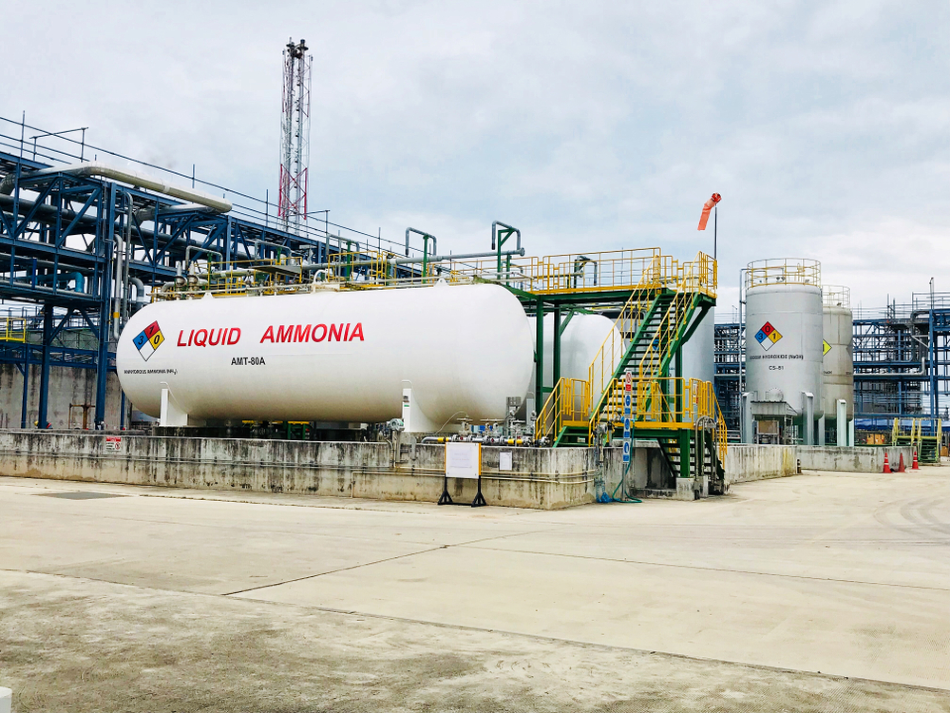
Image Credit: Niwat panket/Shutterstock.com
The world is under increasing pressure to cut carbon emissions that contribute to climate change. One path of hope is in the advancement of clean energy technologies, such as solar, wind and fossil-free fuels for vehicles. Alternative fuels such as hydrogen have been increasingly used for transport in recent years, but what about its long-forgotten cousin – ammonia?
An Overview of Ammonia
Ammonia is a colorless gas, made up of nitrogen and hydrogen with the formula NH₃. Traditionally, it is mainly used as a feedstock in the production of fertilizer.
Ammonia is being investigated as a potential fuel in a similar way to hydrogen. However, it seems contradictory that its process of production has pumped carbon dioxide (CO2) emissions into the atmosphere. Ammonia-producing plants contribute to 1.8% of global CO2 emissions, equating to half a billion tonnes released into the atmosphere per year.
Ammonia is created by reacting methane with steam to produce hydrogen. It then reacts with nitrogen in the air. Through the traditionally used Haber–Bosch process, an ammonia-producing plant converts natural gas such as methane into gaseous hydrogen, but gives off carbon dioxide in the process.
The Carbon Cost of Producing Ammonia
The energy used by ammonia-producing plants has long derived from fossil fuels. Even though clean energy has been used more in recent years, there have been energy supply limitations. Even in better examples, only 50% of electricity demand could be achieved through wind turbines.
One way of cutting the emissions given off by the plants would be to reduce the amount of energy required to create the ammonia from its constituent gases. To do this, catalysts that speed up reactions are needed. However, scientists have struggled to find efficient catalysts that work at lower temperatures. That is not to say there have not been significant improvements in catalysts over the years. Rather than requiring a high temperature of around 300 °C, ammonia can now be produced at moderate temperatures, down to 50°C. Pressures can also be lowered by the new catalysts, further reducing energy demand.
The Green Side of Ammonia
Ammonia has another side, instead of contributing to emissions and climate change, it could be used to combat it. Made up of three hydrogen atoms bonded to a single nitrogen atom, it can serve as a low-carbon fuel, only giving off nitrogen and water at a low combustion temperature in a car engine.
These ammonia-fuelled vehicles operate in much the same way as those that run on fossil fuels. Liquid ammonia is burned with oxygen to create energy. Unlike conventional gasoline vehicles, ammonia-powered cars would not emit carbon dioxide.
Read more: Ammonia as a Green Shipping Fuel: The Viking Energy Project
Ammonia vs. Hydrogen
Hydrogen has taken off in recent years and is expected to grow to a value of over $42000 million by 2026, from the market size value of $652 million in 2018.
Scientists previously thought ammonia could rival hydrogen as a potential energy fuel source for years, though it looks like ammonia was fighting a losing battle. Compared to hydrogen, ammonia has been more challenging to oxidize when reacting with oxygen, meaning less power could be produced in ammonia fuel cells than hydrogen fuel cells.
The rise of clean energy vehicles in recent years is thanks to the development of fuel cells. These technologies are sources of power that convert chemical energy to electricity, without expelling pollution.
A hydrogen fuel cell powers a vehicles’ onboard electric motor, only giving off heat and water vapor. Likewise, an ammonia fuel cell gives off heat, nitrogen and water vapor.
Researchers have not given up on the potential of using ammonia. Scientists are investigating the possibility for ammonia to be used in fuel cells as a cheap, clean and powerful energy source for vehicles.
Ammonia Fuel Cells – Reality or Fantasy?
Engineers from the Center for Catalytic Science and Technology, University of Delaware (UD) reportedly solved the oxidation problem with ammonia by using hydroxide exchange membrane fuel cells.
Their prototype is presented in their paper published last year in Joule, which mentions: “Alternative carbon-neutral synthetic fuels are needed to decarbonize the transportation sector, bridging the gap between batteries and biofuels. We find that ammonia has the lowest source-to-tank energy cost by a significant margin.”
This suggests that ammonia could be the most efficient fuel source for clean energy vehicles. How it compares to already established hydrogen in the coming years is yet to be seen.
"As a nitrogen-based liquid fuel, ammonia is cheaper to store and distribute than hydrogen and avoids the carbon dioxide emissions of other liquid fuels, which are expensive to capture."
Brian Setzler, lead author and postdoctoral associate, UD
As the team continues to work on developing ammonia fuel cells, time will tell if they can make this technology cheaper and more efficient, so that ammonia fuel cell vehicles may, one day, become commonplace.
References and Further Reading
Zhao, Y et al. (2019) An Efficient Direct Ammonia Fuel Cell for Affordable Carbon-Neutral Transportation. Joule. https://doi.org/10.1016/j.joule.2019.07.005
Kang, D. W. (2014) Combating climate change with ammonia-fueled vehicles. Bulletin of the Atomic Scientists. Available at: https://thebulletin.org/2014/02/combating-climate-change-with-ammonia-fueled-vehicles/ (Accessed on 16 July 2020).
University of Delaware. (2019) Cost-effective fuel cell technology. [Online] Science Daily. Available at: https://www.sciencedaily.com/releases/2019/08/190820130934.htm (Accessed on 16 July 2020).
Hydrogen Fuel Cell Vehicle Market Statistics – 2026. [Online] Allied Market Research. Available at: https://www.alliedmarketresearch.com/hydrogen-fuel-cell-vehicle-market (Accessed on 16 July 2020).
Worthington, Sj B., & Fogg, A. M. (2019) New Chemical Processing and Recycling Technologies for Autocatalysts. https://www.researchgate.net/publication/335967400_New_Chemical_Processing_and_Recycling_Technologies_for_Autocatalysts
Disclaimer: The views expressed here are those of the author expressed in their private capacity and do not necessarily represent the views of AZoM.com Limited T/A AZoNetwork the owner and operator of this website. This disclaimer forms part of the Terms and conditions of use of this website.